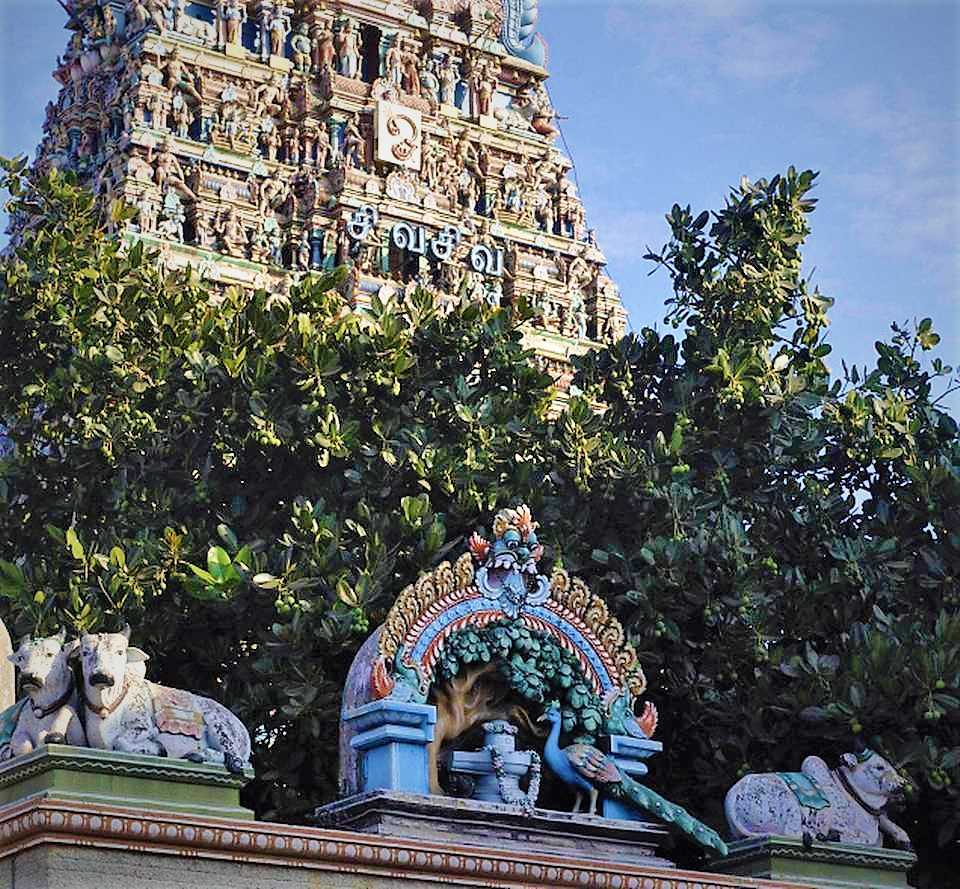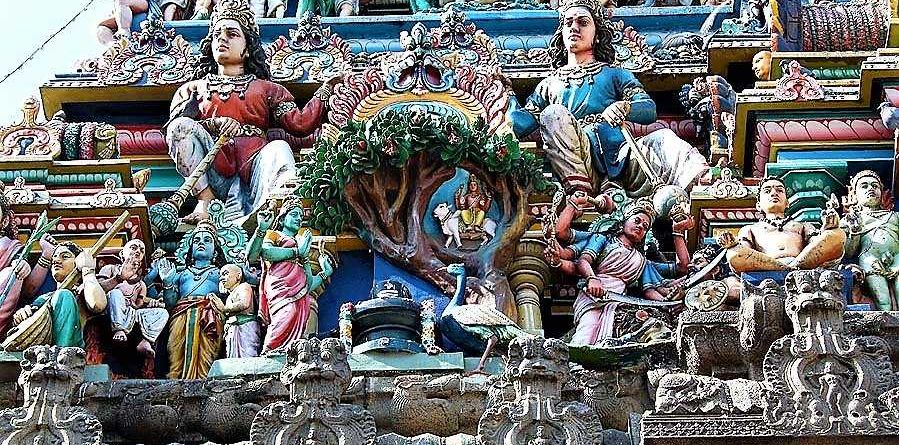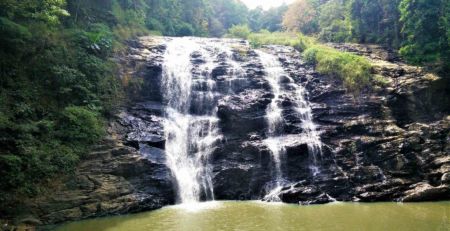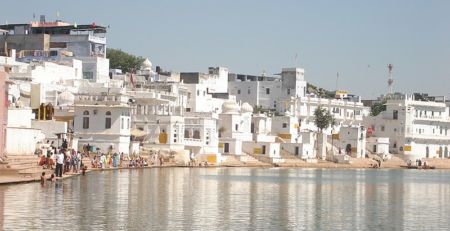Kapaleeswarar Temple and the Wish Yielding Tree of Mylapore
Every time I happen to visit Chennai, I make it a point to cover the ancient temples. A few years back I covered a few namely Kapaleeswarar temple, Parthasarathy temple and Santhome Cathedral Basilica. The Kapaleeswarar temple is a massive temple and an ancient one too. The belief is that the goddess of this temple fulfills the wishes of the people. To know more about it keep reading …
History about the temple:
Kapaleeswarar temple is a temple dedicated to Lord Shiva and Goddess Karpagambal. Karpagambal is a reincarnation of Goddess Parvathi. The Pallavas seem to have built this temple in the 7th century AD. As per the hymns composed by the Nayanars the temple was located along the shore side. The Nayanars are a group of 63 saints who are ardent devotees of Lord Shiva. This temple has references in early tamil texts that date to the 6th century AD.
As per historians this temple is supposedly the original temple. The Portuguese destroyed this temple in the mid 16th century. The Vijayanagara Kings rebuilt the Kapaleeswarar temple in the 16th century. This temple is now located about a km from the original temple and in the city of Mylapore.
Architecture of the temple:
This temple built in Dravidian style has two gopurams (gateways) as entrance. The east gopuram stands 120 feet high when compared to the smaller western gopuram. The gopuram has many colorful beautiful sculptures of the gods and goddesses. There is a large tank (kalyani) beside the temple. It is the largest water tank that I have ever seen beside a temple.
There is a shrine of all the Nayanars in bronze. Likewise there is an idol of the saint Sambandar at the entrance of the temple. Sambandar a saint of the 7th century is the most prominent of the 63 Nayanars. Saints Sambandar and Appar had sung hymns about this temple then. There are many vahanas (vehicles) and idols of gods (Ganesha and Karthikeyan) in this temple. The Punnai tree in this temple is the oldest tree in the city of Chennai. The ‘Parvathi and her penance’ section below covers this Punnai tree and its significance.

Legendary connection:
This temple has a few legendary stories involving Lord Brahma and Goddess Parvathi.
Brahma and his penance:
As the legend goes … Brahma did not pay respect to Shiva over a meeting. This enraged Shiva who removed one of the heads of Brahma. Brahma then came down to Mylapore. As a part of his penance to please Shiva, Brahma installed a linga here. Lord Shiva has been worshiped ever since.
Parvathi and her penance:
As per another legend, Shiva was narrating the significance of the Panchakshara Mantra to Parvathi. A dancing peacock catches her attention and distracts her. A furious Shiva curses Parvathi turning her into a peahen. As advised by Shiva, she performs penance in Mylapore to get rid herself of the curse.
Punnai tree and its significance:
Parvathi worshiped the Linga under the Punnai tree. Punnai tree is ‘Stala Vriksha’ (monumental tree) indigenous to this temple. Pleased by her penance, Shiva turns Parvathi back to her original form. The Punnai tree still exists and there is a statue of a peacock thus symbolizing Parvathi.
Karpagambal – Goddess of the Wish Yielding Tree:
Goddess Parvathi is worshiped here as Karpagambal/Karpagavali. Karpagambal meaning the celestial tree ‘Karpagam’. She is also known as ‘Goddess of the Wish Yielding Tree’ that grants everything asked for.

Mylapore, its naming and different names:
Mylapore gets its name due to the legend of Parvathi in the form of a peahen. Also Myil in tamil means peacock. As per the Brahmanda purana, Mylapore is referred as Mayurapuri. Mayur in Sanskrit means peacock.
Vedapuri and Sukrapuri are some of the alternate names of Mylapore. Vedapuri because the four vedas prayed to Lord Shiva here. Sukrapuri because the one eyed Sukracharya worshiped Lord Shiva here to restore his eyesight. Blinded in one eye by the dwarf Vamana (incarnation of Lord Vishnu), Sukracharya regains his lost eyesight.
The Annual Festival:
The annual festival falls in the months of March-April. Named after the 63 Nayanars who attained salvation by their deep devotion for Lord Shiva, the grand festival lasts for 10 days.
This grand festival lasts for 10 days. During this festival the idol of Lord Shiva (Kapaleeswarar) and Goddess Parvathi (Karpagambal) are taken out in a procession and the idols of Nayanars follow. Although very crowded, it is still a high recommend to witness the grand festivity.
To summarize, this temple is a must visit when you are visiting Chennai.
Best time to visit the Chennai
The winter months from October to March is the best times to visit Chennai and the temple. However if you wish to attend the temple’s annual festival, then you should visit it between March-April.
How to reach Chennai ?
By Air:
The airport is located 18 kms from the main city and well connected from the major cities of India.
By Rail:
The railway station is located 8 kms from the main city. There are direct trains are available to Chennai from many cities of India.
By Road:
Chennai is well connected by road to all the major cities and highways.
For more such spiritual experiences in India, check out some of the pilgrimage places to visit in India. In case culture is of interest, check out the places of Indian heritage and culture. And if history is your interest, check out some of the historical places in Tamilnadu and the rest of India.
In case you are keen on traveling to southern India, you could take a look at the itinerary of Tamilnadu and cover this temple as a part of this itinerary.
India is not just about spirituality. There are many more facets to this ancient land – culture, mystery, history, nature, wildlife and so on. Check out the holiday and tour packages representing the different facets of India travel.












Comment (1)
Interesting articles
Very interesting to know about the peacock story and the resultant name of the area.
Punnai Tree and its significant is another new learning for me in spite of having visited this temple like anybody else for so many Years. And I am happy this articles throws light on certain significant aspects of this temple and I am becoming aware of certain interesting facts at the age of 65, better late than never.
Thanks